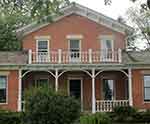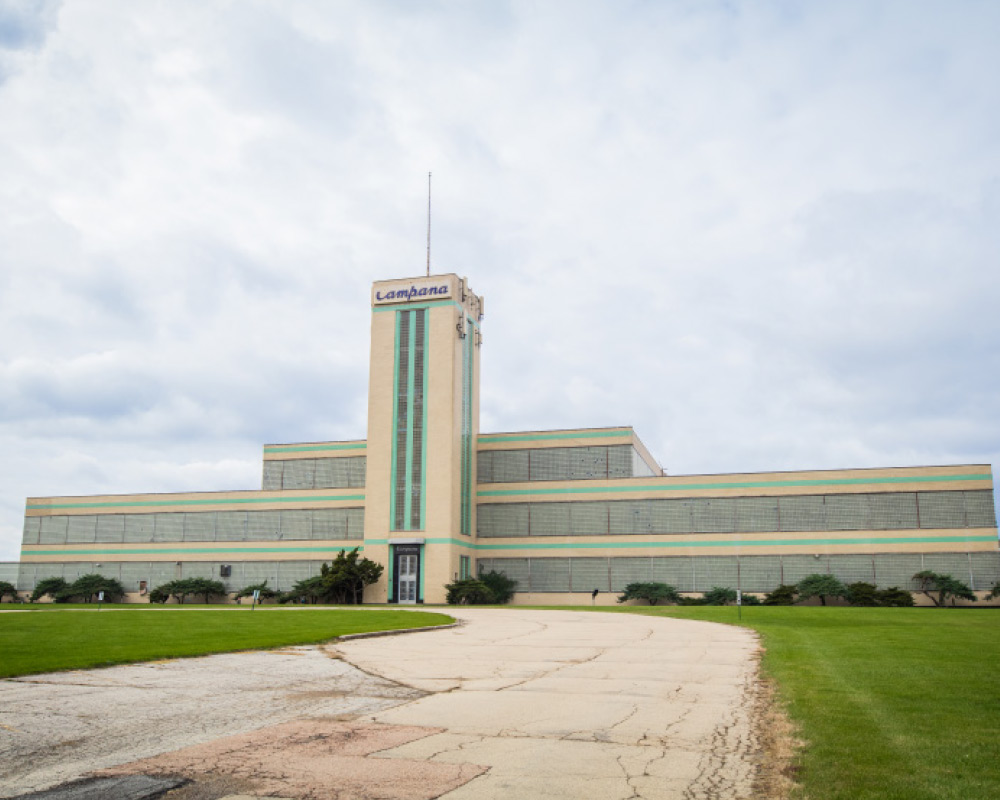Check out these unique destinations that reflect the genuine character of our region.

St. Sava Serbian Orthodox Monastery & Cemetery
32377 N. Ill. Route 21, Libertyville, (847) 362-2440
This was the first Serbian Orthodox seminary in America, named for the founder of the Serbian church.
The first Orthodox Serbs arrived in the western United States in the late 19th century; by the 1910s, a very strong American diocese stretched all the way to Chicago. Due to the 1917 Bolshevik Revolution, Archimandrite (or Rev.) Mardarije Uskokovic was unable to be consecrated as bishop, and instead served as parish priest of Holy Resurrection, the oldest Serbian Orthodox church in Chicago.
That same year, with his own money, he purchased 33 acres near Libertyville for St. Sava Serbian Orthodox Monastery, dedicated on Sept. 7, 1925. A seminary established in 1945 closed in 1949; the current theology school has been open since 1986.
The church was consecrated on Sept. 6, 1931. Mardarije was elevated to the status of bishop in Belgrade in 1926, and returned to serve at Holy Resurrection until his death in 1935. In 1944, a summer camp for Serbian children in America was established at St. Sava, which continues today.
St. Sava is the final resting place of the only European monarch buried on American soil: Serbian King Peter II, who chose St. Sava as his burial place because of the large Chicago Serbian population – upwards of 400,000, by unofficial counts. ❚

William B. Fosser’s Puppet Production Opera in Focus
3000 Central Road, Rolling Meadows, (847) 818-3220, operainfocus.com
In this unique concept, snippets of well-known operas and Broadway musicals are performed by fully articulated rod puppets, manipulated from under the stage floor. Even the conductor, Maestro Tosci, and the musicians are puppets.
The theater dates back to 1936, when Ernest Wolff founded the Chicago Miniature Opera Company; it was so successful that he toured with it. While Wolff was serving in World War II, a restaurateur stole his idea, opening the Kungsholm Miniature Grand Opera, engaging Bill Fosser, a 14-year-old gifted puppet designer and opera lover.
Upon his return, Wolff successfully sued the restaurateur and opened his own puppet opera theater. Ironically, Kungsholm prospered and Wolff’s endeavor went bankrupt. Fosser would go on to work as a successful artistic and set designer in film and theater.
Sold to a restaurant chain in the ’60s, the Kungsholm closed for good in 1971. After retiring, Fosser started Opera in Focus, training and mentoring its current owners, brothers Justin and Shayne Snyder, until his death in 2006.
Productions last about an hour, with three to five scenes. The stories are explained beforehand, and a puppet demonstration and backstage tour follow.
Shows take place on Wednesdays at 4 p.m. and Sundays at 1:30 p.m. Reservations are required. ❚

Weber Grill Restaurant
1010 N. Meacham Road, Schaumburg, (847) 413-0800
The Weber Grill, that symbol of summers in America, was created in 1952 by George Stephen of Mount Prospect. An avid backyard griller, Stephen was unhappy with the shallow, flat brazier grills of the day; the food was too close to the hot charcoal, resulting in a lot of smoke and burned steaks. Wind and rain also vexed cooks on this open grill.
Stephen worked at Weber Bros. Metal Works, which fabricated, among other things, buoys used in nearby Lake Michigan, and one day, inspiration struck. He used the bottom half of a buoy as the cooking base and the top half as a lid, with adjustable vents to feed the fire.
He took it home, and soon neighbors were clamoring for their own. Partnering with Weber Bros., Stephen began selling George’s Barbecue Kettle to America, one hardware store at a time.
The grills sold so well that Stephen bought out Weber Bros. and opened Weber-Stephen Products in 1959. Sales grew between 15 and 30 percent each year, until by the 1970s, Weber was a household name.
The first Weber restaurant opened in 1989, to demonstrate the versatility of the Weber grill. With the kitchen completely open and visible to diners, chefs cook on oversized, customized grills using real charcoal – up to 2,000 pounds a day – and cook on multiple grills at once, for variable heat.
For a more casual meal inside the restaurant, there’s Smokey Joe’s Bar, named for the smaller patio version of the Weber Kettle. There are four Weber Grill Restaurants in Chicagoland, and their giant red Weber Grill outside can hold 300 hamburgers. The Schaumburg location features grilling classes taught by its chefs. ❚






















































